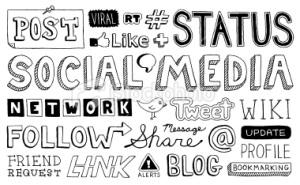 I started this post with the intention to list all the reasons why blogging can help your business; how to start a blog; what to blog about, etc.; however, I started writing and quickly remembered that the concept of blogs in general remains an enigma to many businesses and individuals; otherwise there wouldn’t be a business without one.
I started this post with the intention to list all the reasons why blogging can help your business; how to start a blog; what to blog about, etc.; however, I started writing and quickly remembered that the concept of blogs in general remains an enigma to many businesses and individuals; otherwise there wouldn’t be a business without one.
I then decided to attempt to demystify the blogosphere. If you or your business don’t have a blog, do you know that you’re effectively missing out on business opportunities, public awareness about your products and services, cost-saving on your advertising efforts, and so much more?
“Blog” is not just another buzz word anymore. It’s a way of communicating with your customers, associates and the community-at-large. In fact, more often, businesses are using them as effective tools to help build out their marketing strategies. They are fantastic supplements to any business or marketing plan, so if you aren’t currently blogging, it’s about time you started.
Business blogs are ideal tools to integrate all your marketing tactics. They can help drive traffic to your web site, generate leads, increase publicity, inform and engage your prospective and existing customers; all while enhancing your other social networking efforts, such as your web site, Twitter, Facebook, LinkedIn, e-newsletters, videos, and so much more.
Granted, effective blogging takes a high level of effort, skill, planning, resources and strategy; but as long as you understand the benefits of having one, and agree that it’s time your business got onboard, I can make the process absolutely seamless and cost-effective for you.
According to Hubspot, “If you still need to be convinced that you should start a business blog to begin with, keep in mind that B2B companies that blog only 1-2X/month generate 70% more leads than those that don’t blog at all.”
“In a nutshell, making your blog a long-term asset by publishing a lot of content over time makes a big difference. This is evidenced by the fact that the average company with 100 or more total blog articles is more likely to experience continued lead growth, and even more compelling — companies with over 200 blog articles generate more than 5 times the leads than those with 10 or fewer,” explains Pamela Vaughan, Hubspot.
Web users are now researching and browsing information about brands constantly. There is absolutely no reason why you shouldn’t be getting a piece of the search pie; and a blog, done right, will help you achieve that.
Hubspot, a globally recognized authority on SEO, has statistics proving that businesses who blog receive 55 percent more traffic to their website on average than those that do not.
The traffic is a desirable side effect from adding regular blog posts because it creates keyword and search phrase-rich content that people are scouring the Internet to find. An increase in traffic to a website generally means more sales for that business.
In layman terms, the biggest influence for businesses to start blogging is actually to drive traffic to their web site. If you think of a spider’s web, imagine your core web site in the center of the web, and all the connected threads around it are your other mediums and social networks that drive search engines (and ultimately your consumer) back to your web site, both through SEO and links.
Whatever business or industry you’re in, you’d be surprised at how much you have to offer. The biggest hurdle is creativity. Blogging creates the greatest platform to showcase your expertise and more importantly, stay up to date on the latest technologies, trends and news within your industry as you seek out new ideas and topics to write about.
I mentioned earlier that blogs are a great supplement to your existing tools. Blogs offer a creative platform to speak to clients and customers, giving information beyond what is posted on your business website. They are also great at finding prospective customers in organic ways. There are plenty of opportunities for people to discover your blog, and you can attract a whole new audience to help expand your business.
Here’s a very simple example for a retail clothing shop.
Your basic web site will detail information about your products, services, brand, and so on. If you’re on social media, it will (or should) link to your blog, Twitter, and other social networks.
On the other hand, your blog should talk about the latest seasonal trends, hot fabrics and colours, complimentary styles for each body shape, a look-of-the-week; or perhaps a customer feature. Now, your blog should include key words and phrases that are associated with your web site (along with links), so the content complements each other.
Then, go viral on Twitter with engaging statements or questions, or perhaps relevant photos on Instagram; or share your latest post on Facebook, all linking back to your blog – don’t forget those key words and phrases.
Once you have followers, they will subscribe to your blog, retweet, share, respond, and ultimately purchase - if you’re compelling enough!
Don’t forget who your target market is. If your target market is 16-25 year old females, make sure you create provocative posts that appeals to that demographic. They won’t want to hear about how to diminish wrinkles.
There is a method to the madness, and if you take advantage of the potential opportunity, you too can reap the rewards. If you’re not sure how take the next step, I’ll show you how.
